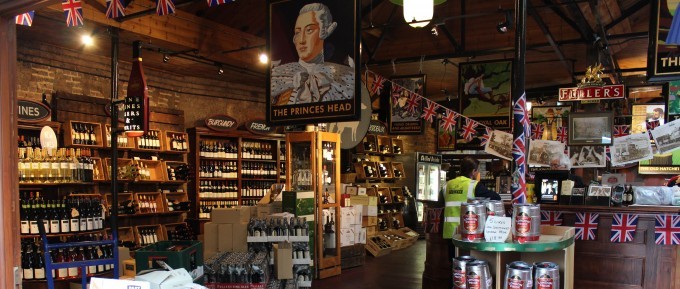
Every year, Jansons takes a select group of guests to the Fullers Griffin Brewery in Chiswick, West London. As usual, we gathered in the Mawson Arms pub before the tour set off.
The brewery has been on the same site for over 350 years and, because they cannot spread any further out, it has grown upwards as more production has been required. This is the only site where Fullers Beers are produced and all domestic and international demand is fulfilled from here.
As well as the machinery and equipment required for the huge demand today, they have kept on site many older pieces such as this copper.

Note the capacity, 160 barrels. Between each brewing, the copper had to be cleaned. The youngest apprentices at the brewery would climb down the internal ladder and clean it out. Because it was such a horrible job, they were rewarded with an extra token in their pay packets, with which they could buy a pint of beer.

The new coppers aren’t copper at all, they’re made of stainless steel and are automatically steam cleaned. Their capacity is much greater, being 320 barrels, that’s 92,160 pints! An average daily brew of Fuller’s flagship brand London Pride uses 750 barrels of water, 13 tonnes of malt, 110 kilograms of hops and 320 kilograms of yeast. All of this produces 640 barrels or 184,320 pints of London Pride – that’s enough to give every spectator at a Wembley Cup Final two and a bit pints each.
Fullers used to draw water for brewing from it’s own wells, but now uses mains water. This is refined to replicate the favoured ‘Burton-on -Trent’ water, a process called Burtonisation. The other main ingredients are malt, hops and yeast. The malt provides the sugar which eventually turns to alcohol. The level to which it is roasted (kilned) helps decide the colour and flavour of the beer to a large extent. Hops not only add the characteristic bitter flavour to beer, but also stop the beer going off with their mildly antiseptic properties. The yeast converts the sugars into alcohol and different strains of yeast produce vastly different flavours. Samples of all Fullers yeasts are held in a National Yeast Collection so that, should sudden disaster strike and all traces of Fuller’s yeast be lost on site, a new batch could be cultivated from the stock strain.
After brewing the beer is either casked, kegged or bottled. This process is now largely mechanised.


From here, it’s onto the Fullers lorries, all of which have ‘personalised’ number plates, usually incorporating the letters FST (for Fuller, Smith Turner, the original partners whose descendants are still involved in the day to day running of the brewery) and ESB (Extra Special Bitter, one of the flagship beers). The beautiful old drays which used to deliver the beer are now only used for special events, such as the opening of a new Fullers pub. To this day, the pair of horses pulling the dray are jet black and named Griffin and Pride.

As part of the tour, we finished in the Hock Cellar, which is now not only a museum but also a tasting bar. Our guests sampled plenty of the beers and compared how different they taste from each other, now they know why!


After our tour, we returned to the Mawson Arms for a splendid buffet and more networking. Good luck to Matt Henderson, who has been picked to play American Football for the Great Britain Team, we’ll be following his playing career with interest. Thanks to all who came and made the afternoon so enjoyable, lots of interesting opportunities were discussed and will be followed up.
Remember to keep checking our blog page to read about the Olympic Silver Medal Rowers Richard and Peter Chambers on their ‘Road to Rio’, as well as updates on our projects.











